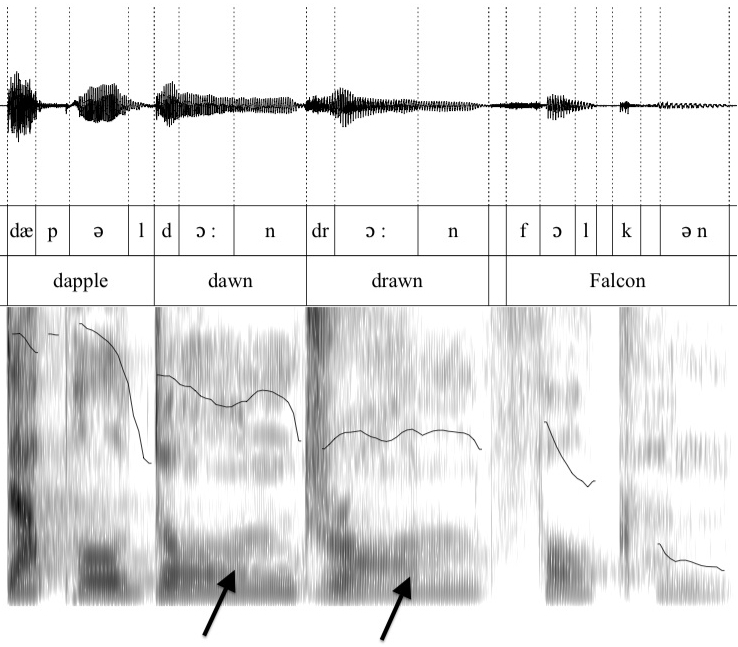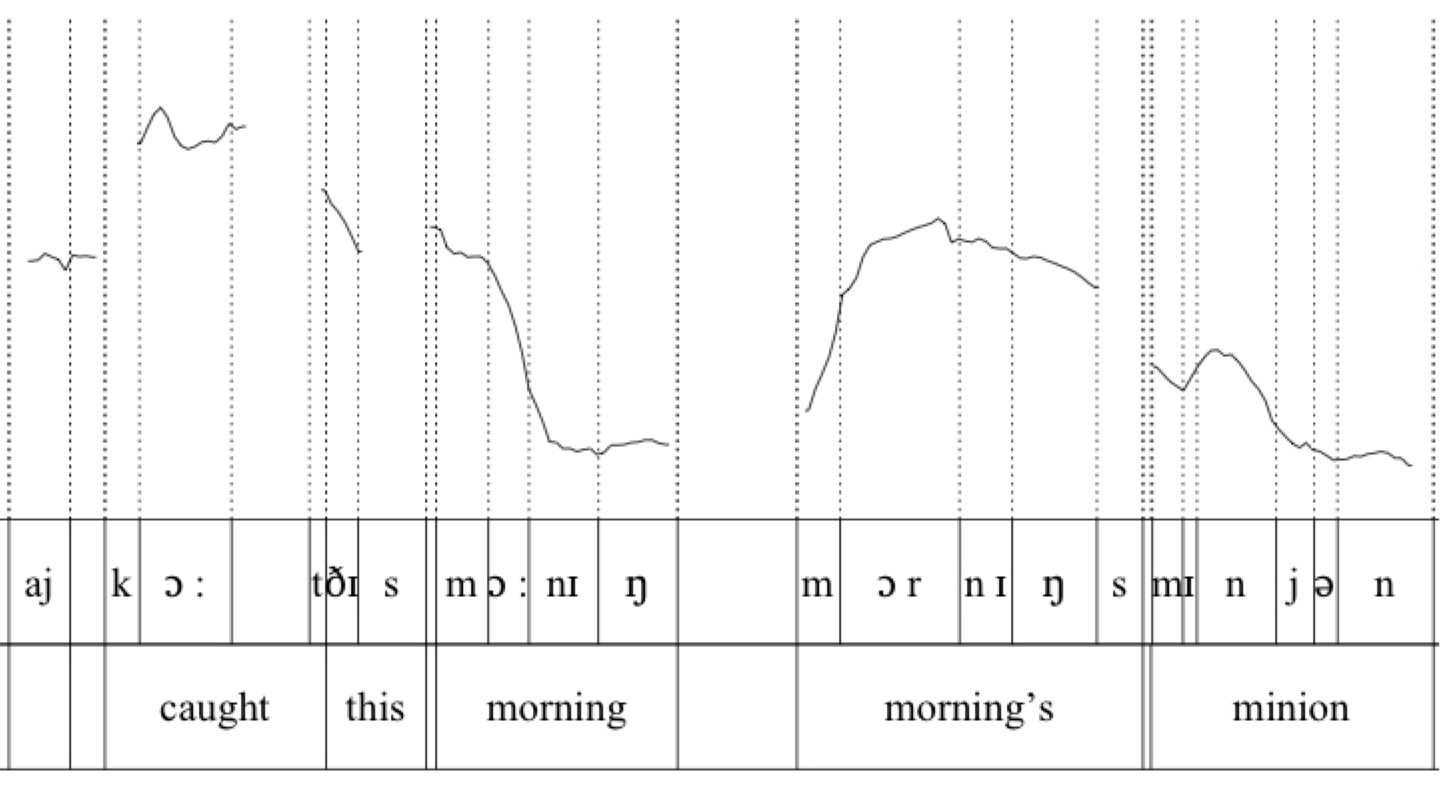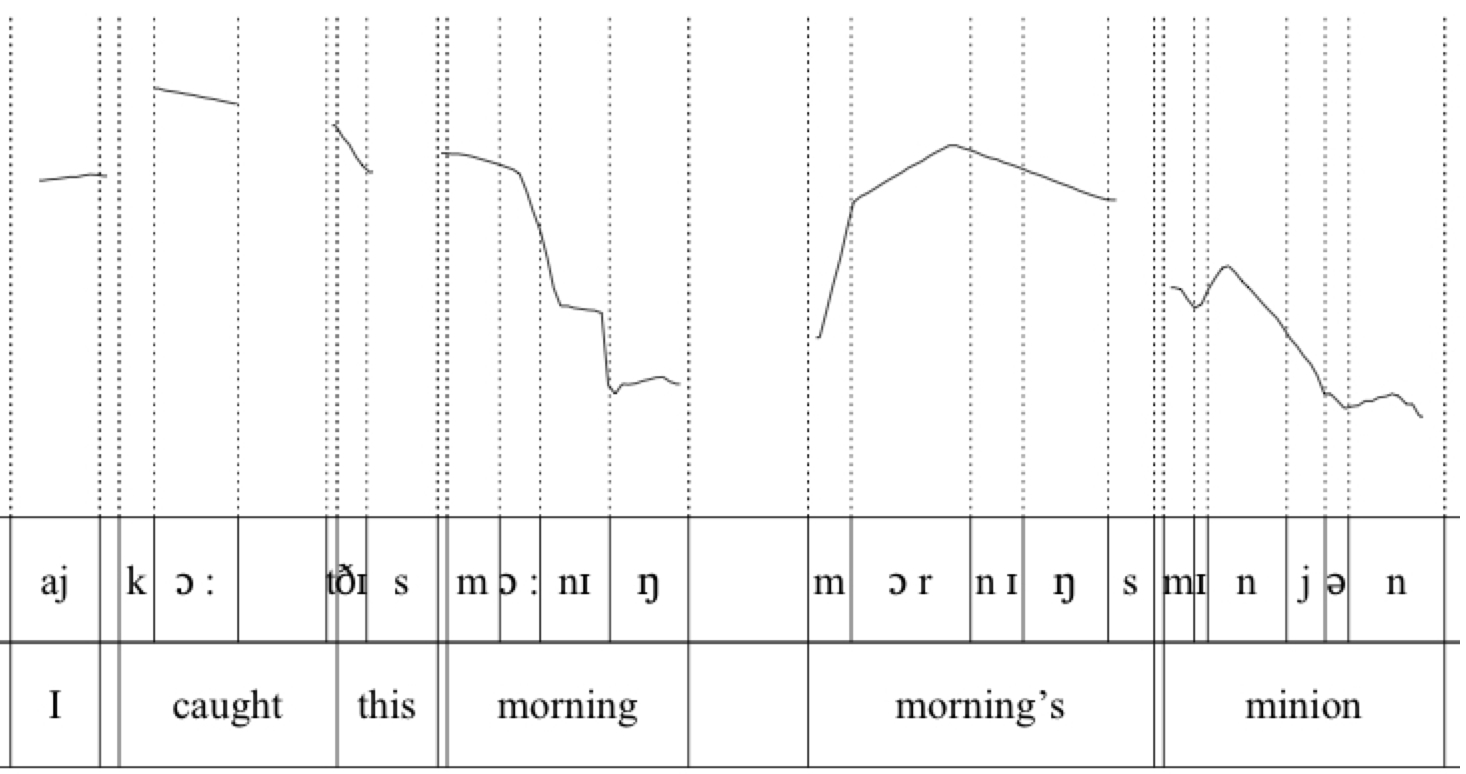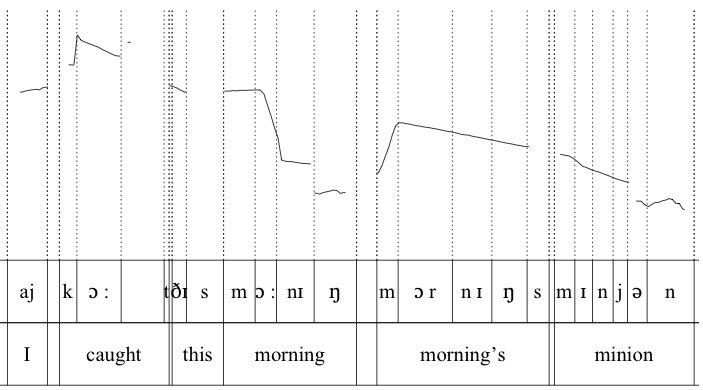
Back to home page
Back to "Occasional Papers"
“The Windhover”—Tongue-Twisters and Cognitive Processes
In the first part of this chapter I discuss, speculatively, the issue of lateral inhibition and the fusion of lingering precategorial auditory information. In the second par I explore some related issues in actual recordings.
Listen to Richard Austin’s reading of Hopkins’ “The Windhover”
Figure 1 gives phonetic information about the phrase “dapple-dawn-drawn-Falcon”, excised from this reading

Figure 1 Wave plot, pitch contour and spectrogram of the phrase “dapple-dawn-drawn-Falcon”, read by Richard Austin. The upper window presents the wave plot display, which shows a plot of the wave amplitude (in volts) on the vertical axis, as a function of time (in milliseconds) on the horizontal axis. The lowest window presents a spectrogram, which displays relative intensity as a function of time (horizontal axis) and frequency (vertical axis); as well as a fundamental frequency (pitch) plot, displaying time on the horizontal axis and the estimated glottal frequency in Hz on the vertical axis.
There is precedent from color interaction that the weaker the perceptual boundaries, the stronger the interaction of gestalt-free elements across them. The refractory period required for articulating two successive very similar sound clusters in the “pileup” generates a well-articulated boundary between the two words. I had the impression that the distinct downstep from the pitch of “dawn” to that of “drawn” enhances this boundary, obstructing the interaction of lingering precategorial auditory information. So, I used the speech processor Praat to lower the pitch of “dawn” to equalize it with “drawn”, blurring the distinct boundary between the two words, so as to boost the fusion of precategorial information

Figure 2 The genuine and “doctored” pitch contour of dapple dawn drawn Falcon. The higher, dim curve reflects the genuine reading, the lower curve with the “pitch dots” reflects the manipulated reading.
The difference between the two versions will be better discerned when listening to them in close succession
Finally, listen to the first few lines of the poem with the doctored version substituted for the genuine one
A similar problem arises, with the necessary changes, at other points of this performance, such as in “this morning morning’s minion”. Here too the boundary of the first token of “morning” is enhanced by pitch movement, obstructing the interaction of lingering precategorial auditory information of the two tokens of the same word. But while in the foregoing case the relevant feature of the pitch movement was a distinct downstep at the onset of the similar words, here the relevant features involve terminal contour followed by a pitch reset.

Figure 3 Pitch contour of “I caught this morning morning’s minion”. The terminal contour of the first token of “morning” steeply falls to the base pitch, like the terminal intonation contour of “minion”. The fall is followed by a pitch reset on the second token.
The terminal contour of the first token of “morning” falls to the base pitch just like the terminal contour of “minion”, but is considerably steeper. This generates two problems. The terminal contour of the first token is not similar to the second token’s, but to that of “minion”; and the steep fall to the base line suggests discontinuity, enhancing the boundary between the two tokens. This is further reinforced by a longish pause (305 msec) between the two tokens, and a pitch reset at the beginning of the second token

Figure 4 Pitch contour, manipulated, of “I caught this morning morning’s minion”. The pitch on -ning has been slightly raised, in order to weaken the word boundary.
Later I shortened the pause between the two tokens of “morning”. and lowered the pitch onset of this word, to smooth it out with the onset of “minion” on the one hand, and with the lower end of the first “morning”, on the other. Finally, I slightly lowered the jutting pitch peak on “minion” too.

Figure 5 Further manipulation of “I caught this morning morning’s minion”. The pitch contour of “morning’s minion” has been smoothened out, and the huge pause between the two tokens of “morning” shortened.
Richard Austin Reads the Poetry of Gerard Manley Hopkins
http://victorianweb.org/authors/hopkins/windhover3.html
Back to home page
Back to "Occasional Papers"